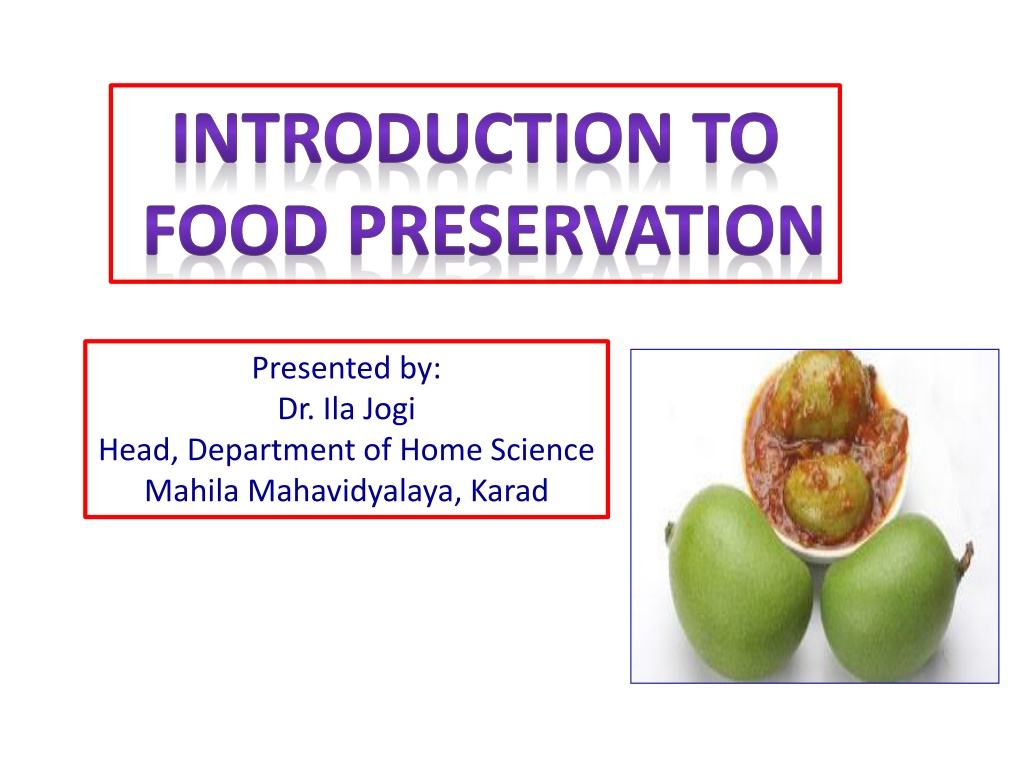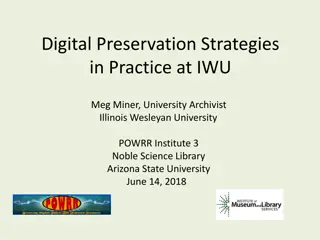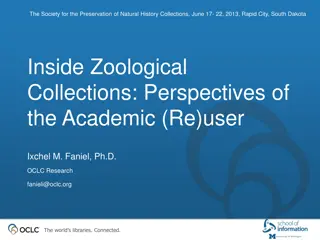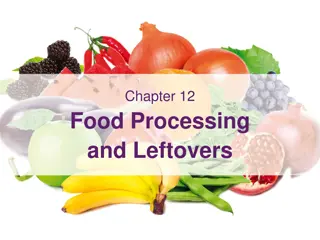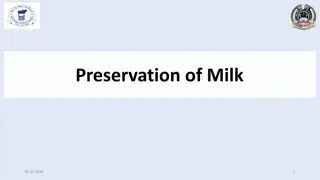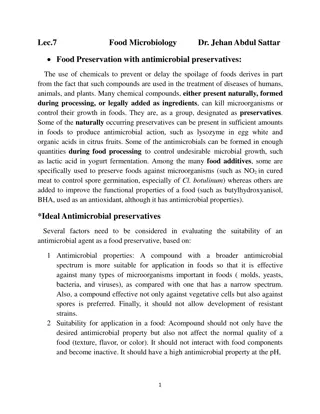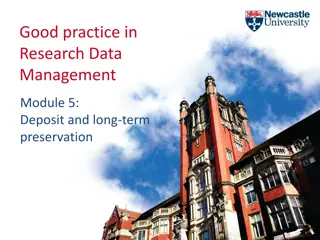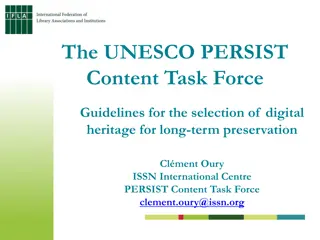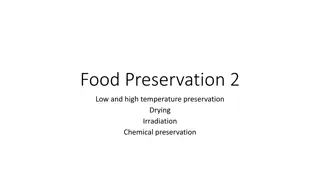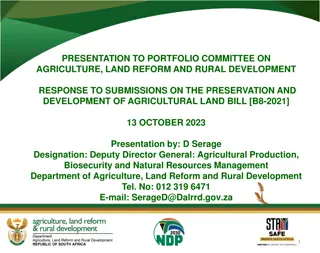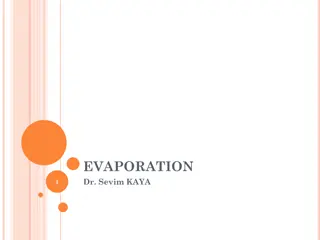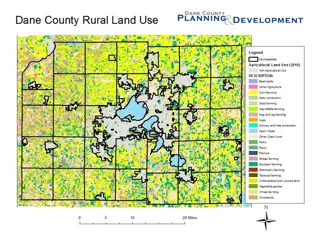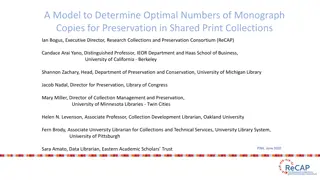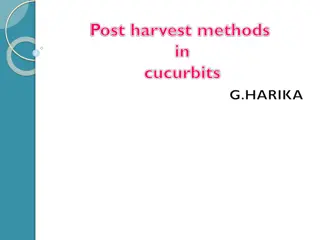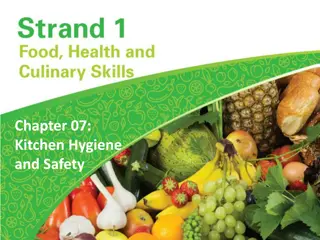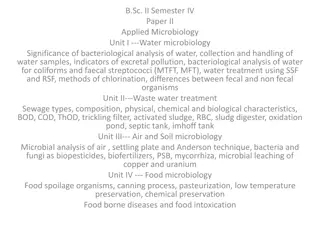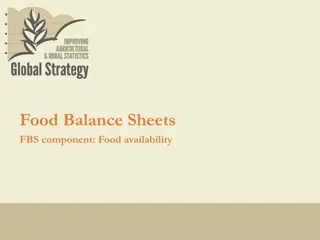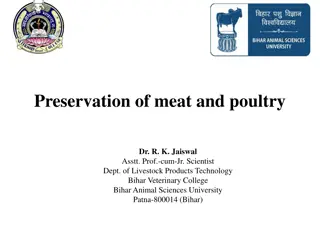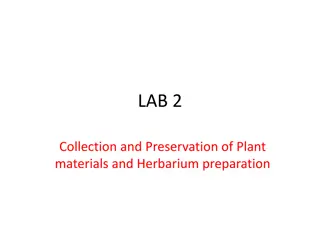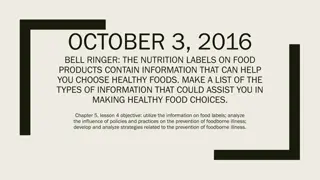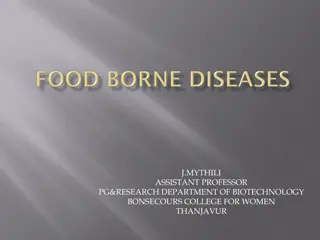Understanding Food Preservation: Techniques and Importance
Food preservation is a crucial aspect of ensuring food safety, extending shelf life, and preventing spoilage. This article delves into the definition of food preservation, its objectives, and the importance of preserving foods. From preventing microbial contamination to increasing food availability, learn about the various methods and benefits of food preservation.
Download Presentation

Please find below an Image/Link to download the presentation.
The content on the website is provided AS IS for your information and personal use only. It may not be sold, licensed, or shared on other websites without obtaining consent from the author. Download presentation by click this link. If you encounter any issues during the download, it is possible that the publisher has removed the file from their server.
E N D
Presentation Transcript
INTRODUCTION TO FOOD PRESERVATION https://3.bp.blogspot.com/-3adBn9AqfR8/WB7-X_zwCLI/AAAAAAAAD1s/pAHO6VSPOiESCdJmxooVjtOxwlDPjki6QCLcB/s320/mango%2Bpickling.jpg Presented by: Dr. Ila Jogi Head, Department of Home Science Mahila Mahavidyalaya, Karad
Contents: 1. Introduction to Food Preservation 2. Definition and Concept of Food Preservation 3. Objectives of Food Preservation 4. Scope of Food Preservation
Introduction to Food Preservation Food preservation activities are as old as human race. It had an important role in the spread of civilization. Delay in the consumption or processing of fresh foods alters its freshness, colour, texture, palatability and nutritive value, organoleptic desirability, aesthetic appeal and safety. To make food available throughout the year, humans have developed methods to prolong their storage life i.e. to preserve them. The rotting process can be postponed by adding preservatives, optimizing storage conditions, or applying modern techniques. Therefore, preservation of foods is imperative in order to increase their shelf life.
DEFINITION Food Preservation can be defined as the science which deals with the process of prevention of decay or spoilage of food, thus allowing it to be stored in a fit condition for future use. Definition: Food preservation is the techniques to prevent food spoilage, food poisoning, food infection and preventing microbial contamination in the food. The process used varies with the length of storage intended. It may as simple asboiling milk so that it may keep for 24 hours or plickling mango or lemon where the intended period of storage may be as longer as a year.
Objectives: To prevent and to remove microbial contamination. To inhibit microbial growth. To kill contaminating pathogens. To minimize food spoilage, food infection and food poisoning. https://2.bp.blogspot.com/-qlT9cN1-uZg/WB8IIihGmUI/AAAAAAAAD2s/eluAcOc7TvwYaW7UIVTiYbdyJrRIxLNCgCLcB/s320/refrigeration.jpg
Importance of Food Preservation Increasing the shelf life of foods thus increasing the supply Making the seasonal throughout the year Adding variety to the diet. Saving time by reducing preparation time and energy. Stabilising prices of foods. Improving the nutrition of the population. Preservation increases availability of foods, thus improving the nutrition of the people. food available
Scope of Fruit and Vegetable Preservation in India: Fruits and vegetables are an important supplement to the human diet as they provide the essential minerals, vitamins and fibre (roughage) required for maintaining health. India with a great diversity in climatic conditions and soil types is ideal for growing a large variety of fruits and vegetables, both indigenous and introduced. Position of India 2nd in vegetables (1st China) and 3rd in fruits. However for various reasons, this abundance of production is not fully utilized and wastage due to spoilage is about 20-30%.
Most fruits and vegetables are seasonal and perishable in nature. In a good season there may be a glut but because of insufficient transport facilities, lack of good roads and poor availability of packaging materials, the surplus cannot be taken quickly enough to markets in urban areas. Moreover the surplus often cannot be stored for sale in off-season because of inadequate local cold storage facilities. Thus, the cultivator do not get a good price for their produce.
Although, the R and D efforts on the development of post-harvest handling has helped in reducing the spoilage, considerable losses continue to occur. Two approaches are possible for solving this problem. (i)One is the creation/expansion of cold storage facilities in the fruit and vegetable producing regions, (ii)as also in the major urban consumption centres, to ensure supply of fruit and vegetable throughout year. (ii) Another approach is to process the fruits and vegetable into various products which could be preserved for a long time and add value to the product.
With increasing in purchasing power of middle class, there is increasing demand for factory made jams, gullies, pickles. In spite of all these, the fruit and vegetable preservation industry of present is able to utilise less than 2% of the total production for conversion into products like canned fruits, juices and their beverage squashes etc. as against 40% in developed countries. Thus there is considerable scope for expansion of the industry, which in turn would give a fillip to development of horticulture, specially in hilly areas and through export of value-added products, earn more foreign exchange. India is one of the cheapest producer of horticultural produce. If the Government addresses some of the gaps in processing industry, Indian economy will get a boost up.
